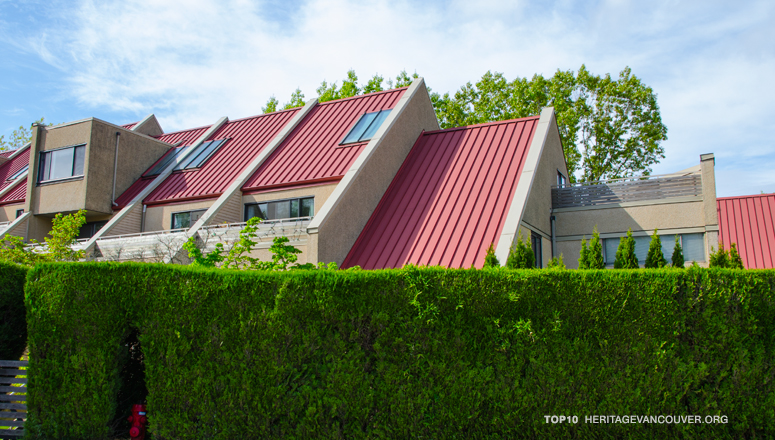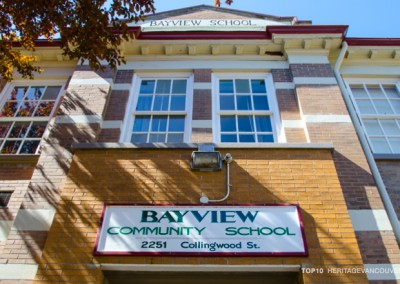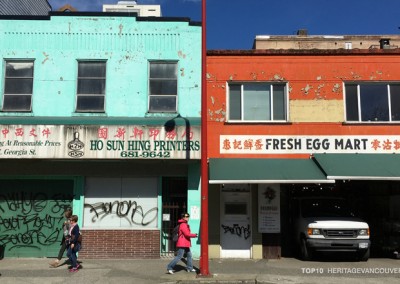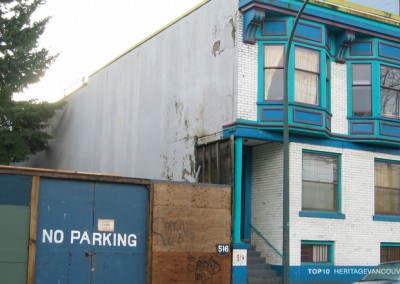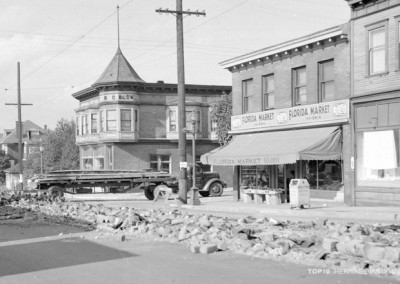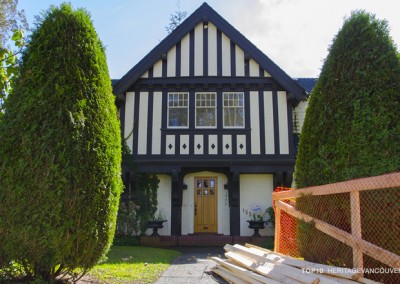False Creek South is a historic urban landscape and widely-admired success story, which demonstrated the transformation of inner city industrial land into a residential enclave designed for pedestrians, inclusive of all ages and incomes.
Located north of 6th Avenue between the Cambie and Burrard Bridges, the neighbourhood features low-to-mid-rise housing clustered around gardens, courtyards, plazas, walking and cycling paths and green space, including a large waterfront park. Reflecting the early 1970s values of a ‘livable city’ and ‘quality of life’, the area was developed on City-owned former industrial lands along the south shore of False Creek. The master plan called for a mix of one-third non-market rental housing, co-ops and condominiums in a “Garden City” landscaped setting.
The land remains City-owned, and 50-year lease agreements with owners of coops and condominiums will began to expire in 2025. The future of False Creek South as a historic urban landscape depends on the condition of housing stock that is now at risk. As leases soon expire, owners are finding it difficult to finance mortgages or repairs and improvements. Heritage Vancouver encourages the City to initiate the lease renewals immediately, to avoid a decline in housing quality, and initiate a new, stable future for this community.
Threat
What is the threat to False Creek South?
False Creek South is City-owned land, and 50-year lease agreements with the owners of the co-ops and condominiums will began to expire in 2025. To build more housing in the area, and generate revenue, the City is considering options for increased density including potential redevelopment of vacant City land near the Olympic Village Canada Line Station. High land values, and the City’s policies of increased density for rental projects, may put additional pressure on the lower-density buildings of False Creek South.
False Creek Community Association’s Re*Plan Committee has entered into a dialogue with the City towards developing a new community plan that would enable modest increases in density, and sensitive infill development. To launch the process, the City has issued a letter to Re*Plan, stating commitments to planning principles that respect the original urban design pattern and tenure mix of one-third non-market rental housing, one-third co-op and one-third condominiums.
While this is encouraging, the future of False Creek South as a historic urban landscape depends on the condition of housing stock that is now at risk. As leases will soon expire, owners are finding that banks may not finance the renewal of mortgages or repairs and improvements. Re*Plan and the City have both agreed it is essential to renew the leases soon but there have been delays.
Another issue is how to ensure development will enhance the special character of False Creek South through shaping the design of infill and building additions.
Beyond the urban design and housing tenure mix, other historic features contribute to the heritage value of the area, such as: diverse, high quality architecture; low-to-mid-rise buildings rising in height from water’s edge; public access to the waterfront; and views to the mountains.
It not yet known if the new community plan will include appropriate design guidelines that will respond to the area’s existing character.
Significance
Why is False Creek South significant?
False Creek South is a historic urban landscape and widely-admired success story, which demonstrated the transformation of inner city industrial land into a residential enclave designed for pedestrians, inclusive of all ages and incomes.
Located north of 6th Avenue between the Cambie and Burrard Bridges, the neighbourhood features low-to-mid-rise housing clustered around gardens, courtyards, plazas, walking and cycling paths and green space, including a large waterfront park. Other characteristic features are: a cluster of float homes; public access to the waterfront; the continuous seawall; views to the mountains; False Creek School; False Creek Community Centre; and the area’s close proximity to shopping and cultural facilities and events on Granville Island. There are currently about 5,000 residents in the neighbourhood.
In 1972, in the context of the Federal and Provincial shifts to centre-left politics, Vancouver elected a Mayor and aldermen dominantly from The Electors Action Movement (TEAM), who placed a heroic new focus on planning policy for the inner city that included a mix of land uses, social diversity, environmental values and public housing. Reflecting the emerging public values of a ‘livable city’ and ‘quality of life’, TEAM championed reclamation of the City-owned industrial lands along the south shore of False Creek and developed a master plan for a mix of one-third non-market rental housing, co-ops and condominiums in a Garden City landscaped setting.
Urban design was arranged to foster social interaction through collective spaces outdoors (e.g. courtyards, plazas) and indoors (False Creek School, Community Centre), as well as public enjoyment of the waterfront. No matter their tenure, views to mountains were made available to residents through a sloped rise from three or four-storey townhouses near to the water, to 8-to-12-storey apartment clusters around 6th Avenue, Cambie Street, and Granville Street. The City also engaged a diverse array of renowned local architects (e.g. Downs Archambault and Thompson, Berwick, Pratt) who together created an aesthetic richness that contributes to the special character and community value of False Creek South.
Position
Heritage Vancouver’s position
False Creek South is a historic urban landscape, and a significant political, social and environmental legacy for Vancouver.
A new plan should respect its past and present as an inclusive community, for all ages and incomes, through retention of the existing mix of housing tenure, and community amenities. New development should respect the historic urban design pattern and features through planning policies and design guidelines for infill and building additions that will enhance the area’s unique character.
False Creek Community Association’s Re*Plan Committee has entered into a dialogue with the City toward developing a new community plan that would enable modest increases in density and infill development. This new plan should respect the past and present of False Creek South as an inclusive community for all ages and incomes, through retention of the current housing mix and public amenities.
Heritage Vancouver supports the commitments of the False Creek Community Association Re*Plan Committee and the City of Vancouver to an inclusive and broad public process to develop a new community plan for False Creek South.
As an immediate step, Heritage Vancouver encourages the City to initiate the lease renewals, to avoid a decline in housing quality, and initiate a new, stable future for this community.
Actions
What you can do
- Contact your local MLA or MP and express your concerns about the inadequacy of supportive provincial and federal housing policies and funding.
- Contact Mayor and Council to request that the City of Vancouver initiate the renewal of the 50-year leases in 2016.
- Stay informed about the Re*Plan and City of Vancouver dialogue and participate in the public process for a new community plan for False Creek South.
Resources
For details on TEAM and the reframing of inner city planning policy, please see:
Thomas A. Hutton (2004) “Postindustrialism, Postmodernism, and the Reproduction of Vancouver’s Central Area: Retheorising the 21st Century City,” Urban Studies, Vol. 41 (10): 1953-1982.
